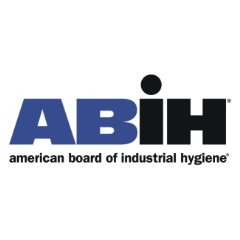Mitigating Thermal Risks for Workers Exposed to Freezing Temperatures
The American Board of Industrial Hygiene® (ABIH®) reminds workers and industry of the numerous health and safety concerns inherent with working in cold environments.
When cold air temperatures are mixed with moisture and wind, cold stress can rapidly begin to impact workers.
At almost six weeks into the new year, extremely cold temperatures have been the norm in many parts of the Northern Hemisphere. This time of year, workers in a wide range of industries succumb to cold stress and, in severe circumstances, could develop hypothermia or frostbite.
The Occupational Safety and Health Administration (OSHA) states that cold stress occurs by driving down the skin temperature and eventually the internal body (core) temperature. This may lead to serious health problems and may cause tissue damage and possibly death. Any employee working in a cold environment could be at risk of cold stress. This involves occupations where workers spend a large portion of their time outdoors during the winter months as well as positions where people work in indoor environments that involve industrial refrigeration or freezing.
OSHA lists the following risk factors contributing to cold stress, which include:
- Wetness/dampness, dressing improperly and exhaustion
- Predisposing health conditions such as hypertension, hypothyroidism and diabetes
- Poor physical conditioning
“When cold air temperatures are mixed with moisture and wind, cold stress can rapidly begin to impact workers,” said Jeffrey Miller, CIH® and Chair of ABIH®. “Employers have a duty to protect workers from recognized hazards including cold stress. Certified Industrial Hygienists (CIHs) are uniquely qualified to recognize and prevent conditions involving thermal stressors and are working to prevent illness and injuries involving these workplace stressors. These professionals are also knowledgeable and skilled with engineering controls and ventilation, health risk analysis and hazard communication, and work environments and industrial processes. Each of these core competencies of the CIH program is instrumental in helping to ensure a safe work environment.”
To learn more about the American Board of Industrial Hygiene®, Certified Industrial Hygienist® credential, or to locate a CIH® to perform industrial hygiene services, please visit www.ABIH.org, email abih@ABIH.org , or call (517) 321-2638.
About the American Board of Industrial Hygiene ®
Since 1960, ABIH®, a not-for-profit corporation, has been the world’s largest organization for certifying professionals in the practice of industrial hygiene. ABIH® is the premier credentialing body responsible for ensuring high-quality certification including education, experience, examination, certification maintenance, and ethics enforcement. Currently, more than 6900 people in 32 countries are certified to use the CIH® credential.
( Press Release Image: https://photos.webwire.com/prmedia/12710/220010/220010-1.jpg )
WebWireID220010
- Contact Information
- Paul Cochrane
- President
- Cochrane & Associates, LLC
- Contact via E-mail
This news content may be integrated into any legitimate news gathering and publishing effort. Linking is permitted.
News Release Distribution and Press Release Distribution Services Provided by WebWire.
